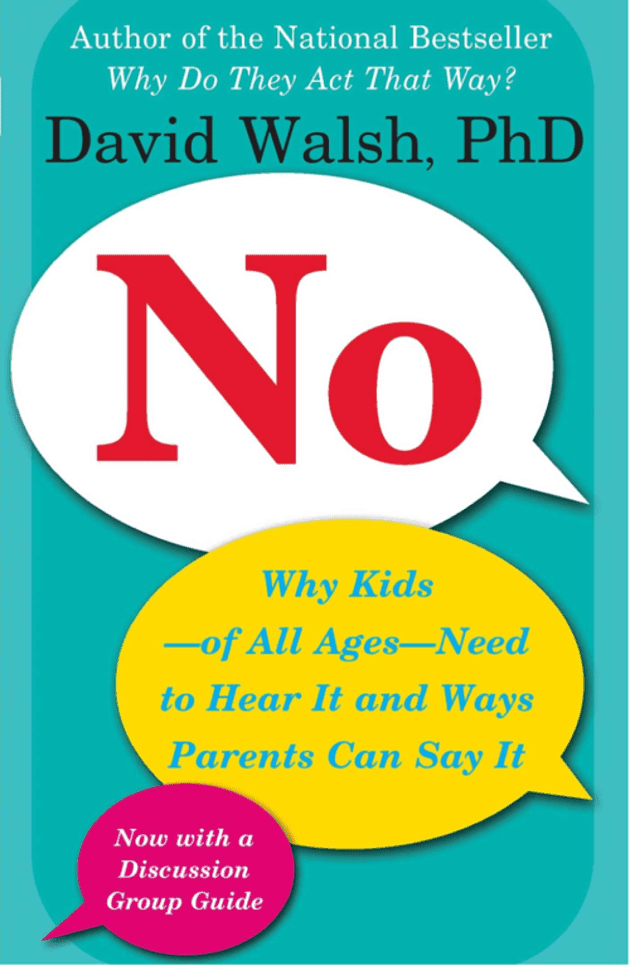
This article contains links to products that we think you'll love. If you make a purchase from our recommendations, we may receive a share of the revenue.
If you catch yourself saying the phrase, "Kids will make their own decisions. There is nothing I can do about it," think again. Kids will ultimately make their own choices, but there are things that you can do to guide them. Here are four things you can do to help influence your child's decisions:
1. Don't underestimate the power of "no"
Don't be afraid to use the word "no" with your child. David Walsh, psychologist and author of "No: Why Kids - of All Ages - Need to Hear It and Ways Parents Can Say It," wrote why parents should say no, and how it can benefit their children: "Skillful parenting means saying no when we ought to," Walsh said.
Children are curious, and they might ask why you said no. Don't scoff at this question. Answer it. Sometimes the answer will be "because I said so," and that's OK. Sometimes a parent's means just saying "no" but for when there are reasons to explain, share it with your child. It's also important to remember to say "yes", too. Children need both allowances and restrictions.
Need a little more guidance on when to say "no"? Read Walsh's book for more information.
You can buy it here.
2. Invite kids into your home
Invite the neighborhood kids or children from their school over for some playtime. You can make your house the cool place to hang out, while keeping on eye on what is going on. Provide after-school treats for the kids (but make sure to check with parents about possible allergies), and help your child come up with fun things for them all to do. This could be jumping on the trampoline, playing appropriate video games, playing a board game or riding bikes around the neighborhood.
Essentially, carefully guide your child to have good friends. Once you get to know the children and their parents, consider allowing your child and their friends to have sleepovers in your home. When you provide a welcoming environment for your child and their friends, you can shape their social environment in a positive way.
3. Respond, don't react
Your kids are watching how you react, and whether you mean to or not, this will have an effect on them. Try to respond, not react. For example, if your child comes home from a friend's house and tells you they watched a movie that you told them not to watch, don't react by yelling. Instead, respond by saying, "You knew that was against the rules. What do you think we should do about this?" By asking this question, you are allowing your child to participate in choosing their consequence. Remember, you as the parent have the ultimate say, but allowing them to discuss this with you will help them to feel responsible, and it lets them consider the seriousness of their action as they help pick an appropriate consequence. If your child suggests something that you think is too light a consequence, you can suggest something else...but don't deny them the chance to evaluate their own actions.
Another way to respond and not react is by using natural and logical consequences. This means not saving your child from natural consequences, and by choosing a consequence that is logical for their action. For example, if you told your child to wash their hands before dinner, and they haven't, you can say, "I see that you have not washed your hands, so that must mean that you aren't ready to eat. You can eat once you've washed your hands." As experts say, remember to separate the deed from the doer, and administer consequences in a calm environment.
4. Teach them right from wrong
Part of your job as a parent is teaching your child right from wrong. If you have a household rule that you aren't allowed to have snacks after 8 p.m., and your child asks for crackers after that time, use this as a teaching moment. You could can ask them what they think would be a good decision. If they say that eating the crackers would be a good idea, take this opportunity to remind them about the house rules. Talk through the situation together.
By doing these four things, you are helping shape your child's environment and their ability to make decisions. Always remember that your children are learning, and you can best teach them by being an example.


